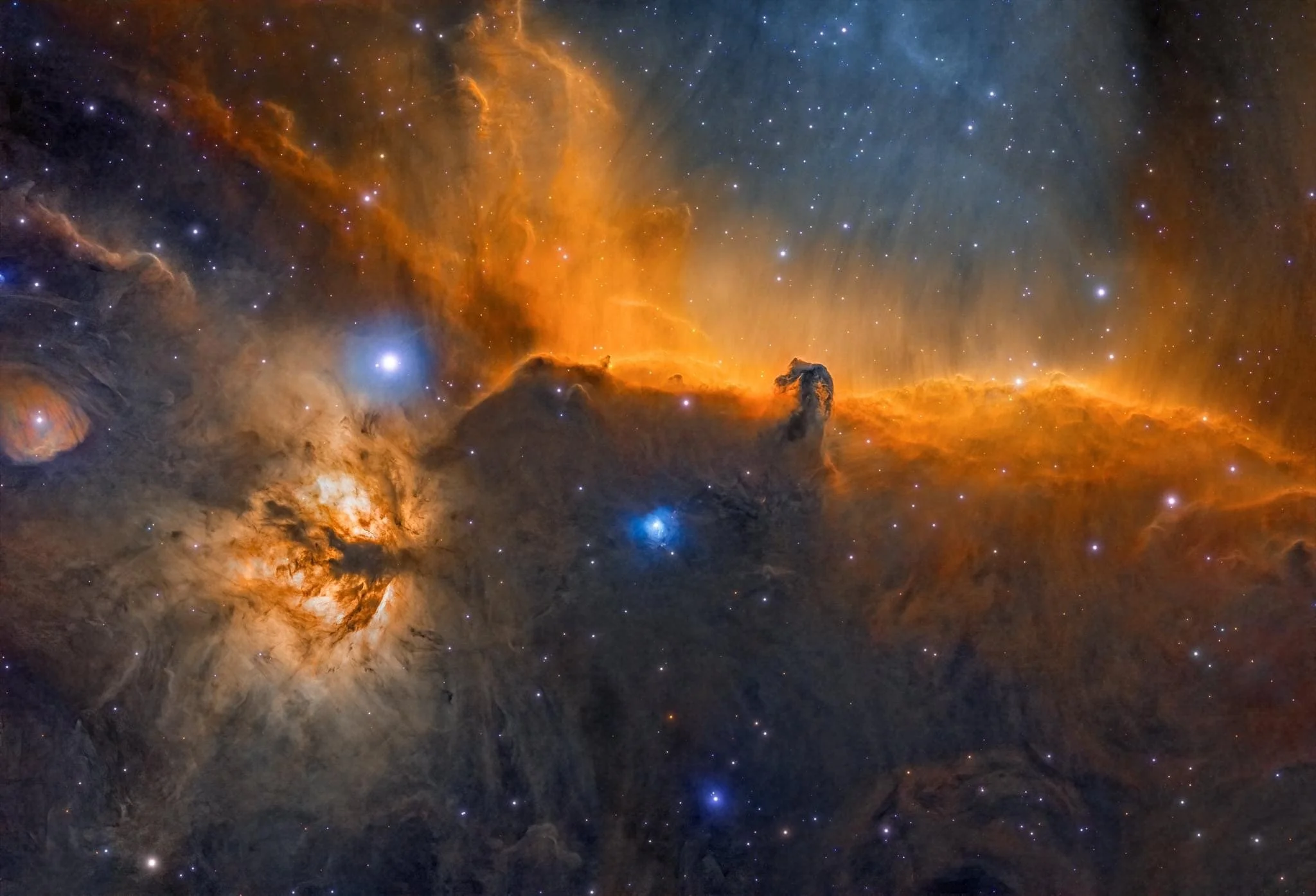
AAPOD2 Image Archives
Horsehead and a Flame
The Horsehead is one of the most famous nebulae on the sky. The horse-head feature is dark because it is really an opaque dust cloud that lies in front of the bright emission nebula. Like clouds in Earth's atmosphere, this cosmic cloud has assumed a recognizable shape by chance. After many thousands of years, the internal motions of the cloud will surely alter its appearance. The emission nebula's color is caused by electrons recombining with protons to form hydrogen atoms. On the image left is the Flame Nebula that also contains filaments of dark dust. Just to the lower left of the Horsehead nebula is a blueish reflection nebulae that preferentially reflects the blue light from nearby stars.
Tech card:
Imaging telescope: Explore Scientific 127mm ED TRIPLET APO.
Imaging camera: ZWO ASI294MM-Pro.
Mounts: iOptron CEM60.
Guiding camera: ZWO ASI290MM mini.
Focal reducer: Explore Scientific 0.7 Reducer/Flattener.
Accessory: ZWO OAG · ZWO ASIAIR Pro · ZWO 8x 1.25" Filter Wheel (EFW).
Frames:
Chroma 3nm Ha: 12x600" (2h) (gain: 200.00) -20C bin 1x1.
Chroma 3nm OIII: 15x600" (2h 30') (gain: 200.00) -20C bin 1x1.
Chroma 3nm SII: 8x600" (1h 20') (gain: 200.00) -20C bin 1x1.
Total integration: 5h 50'
Darks: ~50.
Flats: ~30.
Flat darks: ~30.
Avg. Moon age: 19.61 days.
Avg. Moon phase: 75.53%
Bortle Dark-Sky Scale: 4.00.
RA center: 5h 41' 15"
DEC center: -2° 16' 1"
Pixel scale: 0.706 arcsec/pixel.
Orientation: -93.427 degrees.
Field radius: 0.983 degrees.
Imaging dates: Jan. 3 and 4, 2021.
Imaging location: Abu Dhabi desert, UAE.
Copyright: Wissam Ayoub
Ngc 2024 Flame Nebula
Image Description and Details : Flame Nebula (Ngc 2024) made by Team ARO in South Portugal . This Team is composed of Francis Bozon, Jean_Luc Gangloff, Stéphane Gueyraud.The Flame Nebula extends over about 12 light years. Alnitak (Zeta Orionis), the easternmost bright star in Orion's belt, energises the nebula. The intense ultraviolet radiation from this blue supergiant ionises the hydrogen atoms in the nebula.Gas and especially dust in front of NGC 2024 absorb the light from the nebula and form the dark ribbon seen in the visible light images.These acquisitions were made with Scope Fsq 106, on Eq6 Pro and ZWO Asi 1600MM camera. The exposure times are as follows:-Ha= 201 x 180''-R = 73 x 150 ''-V = 92 x 120 ''-B= 94 x 120 ''That is a total time of about 19.15 hours.
Copyright: Francis Bozon / Team Aro



